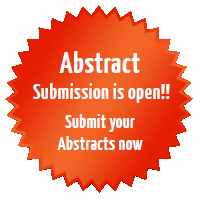About Conference
Biomanufacturing invites all participants from around the world to attend the 8th International summit on Bio manufacturing (ISB-2023) from October 23-24, 2023 Los Angeles, USA.(ISB-2023) This global conference features quick presentations, oral lectures, poster presentations and exhibits.
With the assistance of an additional 1,000 scientific societies, organizes more than 3,000 international events, including more than 300 conferences, over 500 forthcoming and past symposia, and workshops throughout the United States, Europe, and Asia.
Bio manufacturing is a type of manufacturing or biotechnology (ISB-2023) that utilizes biological systems to produce commercially important biomaterials (ISB-2023) and biomolecules for use in medicines, food and beverage processing, and industrial applications. Bio manufacturing products are recovered from natural sources, such as blood, or from cultures of microbes, animal cells, or plant cells grown in specialized equipment. The cells used during the production may have been naturally occurring or derived using genetic engineering (ISB-2023) techniques. Bio manufacturing (ISB-2023) Conference offers the following advantages:
• Encourages effective communication and gathering among persons engaged in cutting-edge fisheries and aquaculture projects on a national and worldwide scale.
•Increase the sharing of information, expertise, and research developments on pertinent issues to ensure that aquatic resources are used, developed, and conserved to their fullest potential. ISB-2023)
• Motivate young scientists and researchers to carry out better research and studies that will create new opportunities for a better society.
• Efforts to increase collaboration among pertinent governmental and non-governmental institutions.
• Seek to increase public awareness by discussing various developments and difficulties in the aquaculture and fishing industries as well as by showcasing cutting-edge goods and services at exhibitions.
Scientific Sessions
Track 1: Biomanufacturing Research And Development
Biomanufacturing involves negotiating a cell to produce a specific protein. Using well- established ways, scientists transfer a gene garbling the asked protein into a “ product cell. ” The two most generally used product cells areE. coli bacterial cells and Chinese hamster ovary cells, or CHO cells. Biomanufacturing is the use of natural systems that have been finagled, or that are used outside their natural environment, to produce a product. Synthetic biology includes two nearly affiliated capabilities which may have wide mileage in commerce and drug.
Track 2: Bio Materials And Biomolecules
The biomolecules- deduced biomaterials fabrication is dependent on chemical, biochemical and mechanical parameters of biomolecules and their bulk accoutrements. therefore, structural variations and weak noncovalent relations present within the introductory structure blocks greatly impact the functional features and operations. Some exemplifications of biomaterials include leaders, skin grafts, vascular grafts, and hernia mesh. Other types of biomaterials include artificial joints, cochlear implants, contact lenses, and sutures.
Track 3: Bioinformatics
Bioinformatics is defined as the operation of tools of calculation and analysis to the prisoner and interpretation of natural data. It's an interdisciplinary field, which harnesses computer wisdom, mathematics, drugs, and biology. Bioinformatics, as related to genetics and genomics, is a scientific subdiscipline that involves using computer technology to collect, store, dissect and circulate natural data and information, similar as DNA and amino acid sequences or reflections about those sequences.
Track 4: Biopharmaceutical Manufacturing
The biopharmaceutical manufacturing process harnesses biosynthesis, which tends to yield far larger, more complex motes — proteins and nucleic acids than are generally produced through traditional chemical conflation. The first similar patch was recombinant mortal insulin, innovated by Genentech in 1982. Biopharmaceuticals, known colloquially asbio-pharma, are the point at which biotechnology and medicinal manufacturing match. Bio-pharma is the operation of living organisms or lines, by- products or factors of living organisms, to help, relieve, or treat conditions. Biopharmaceuticals, drugs made by or from living organisms( including cells from living organisms), are extremely effective in treating a broad range of conditions.
Track 5: Agriculture Biotechnology
Agrarian biotechnology, also known as agritech, is an area of agrarian wisdom involving the use of scientific tools and ways, including inheritable engineering, molecular labels, molecular diagnostics, vaccines, and towel culture, to modify living organisms shops, creatures, and microorganisms. Agrarian biotechnology is a range of tools, including traditional parentage ways, that alter living organisms, or corridor of organisms, to make or modify products; ameliorate shops or creatures; or develop microorganisms for specific agrarian uses. exemplifications include using inheritable engineering to develop pesticide- resistant seeds for soybeans, developing genetically finagled apples with extended shelf life, and using CRISPR gene editing to produce cows that produce further milk.
Track 6: Cosmetic Biotechnology
Biotech Beauty is a technology that employs microorganisms (bacteria, incentive, and algae) to induce high- tech skincare actives sustainably for effective results. These bacteria serve as'micro-factories,' allowing cells to gain and reproduce by stirring them. Cosmetic Technology is a demanding field taking specialized, entrepreneurial & communication chops. Cosmetology in diligence held portions in deals marketing, exploration & development, product and quality control as well as in administration & operation. Biotechnology has impacted cosmetics in numerous ways. Cosmetics companies use biotechnology both to discover and manufacture factors of cosmetics and to estimate the goods of natural and synthetic composites on skin and skin changes associated with aging.
Track 7: Tissue Engineering & Dna Technology Drug Theraptics
The thing of towel engineering is to assemble functional constructs that restore, maintain, or ameliorate damaged apkins or whole organs. Artificial skin and cartilage are exemplifications of finagled apkins that have been approved by the FDA; still, presently they've limited use in mortal cases. The CRISPR/ Cas9 system in towel engineering is playing an important part, as CRISPR is a revolutionary genome- editing technology that's being used for towel engineering where it emphasizes to address towel armature conformation, vulnerable response endurance, cell isolation, and complaint model development.
Track 8: Pharmaceutical Nanotechnology
Pharmaceutical nanotechnology is the instigative, fleetly arising branch of medical wisdom that deals with employing Nano scale accoutrements as medicine delivery and/ or individual tools. As medicine delivery tools, nano- delivery systems can be used to enhance the point-specific, targeted delivery of precise drugs. numerous uses for nanoparticulate medicine delivery systems live, including gene remedy, cancer remedy, AIDS remedy, and radiation. It can also be used to transport proteins, antibiotics, and vaccinations, as well as serve as vesicles to cross the blood – brain. Nanoparticle medicine delivery systems are finagled technologies that use nanoparticles for the targeted delivery and controlled release of remedial agents. The ultramodern form of a medicine delivery system should minimize side- goods and reduce both lozenge and lozenge frequence.
Track 9: Bioremediation Technology
Bioremediation is the use of living microorganisms to degrade the environmental pollutants into lower poisonous forms. It uses naturally being bacteria and fungi or shops to degrade or detoxify substances dangerous to mortal health and/ or the terrain. The bioremediation technology uses natural processes and naturally being catabolic exertion of microbes and shops to exclude, devaluate, or transfigure inorganic and organic pollutants to lower dangerous products similar as carbon dioxide and water. Some exemplifications of bioremediation related technologies are phytoremediation, bioventing, bioattenuation, biosparging, composting( biopiles and windrows), and landfarming. Other remediation ways include thermal desorption, vitrification, air stripping, bioleaching, rhizofiltration, and soil washing.
Track 10: Biochemistry
Biochemistry or natural chemistry is the study of chemical processes within and relating to living organisms. A sub-discipline of both chemistry and biology, biochemistry may be divided into three fields structural biology, enzymology and metabolism. Biochemistry combines biology and chemistry to study living matter. It powers scientific and medical discovery in fields similar as medicinals, forensics and nutrition. With biochemistry, you'll study chemical responses at a molecular position to more understand the world and develop new ways to harness these. Biochemists could come professors at sodalities or universities, and they occasionally work for exploration institutes, consulting enterprises, noncommercial manufacturers, and individual or forensic laboratories. They could also work at civil agencies similar as the Food and Drug Administration and the National Institutes of Health.
Track 11: Tissue Engineering
Towel engineering is a biomedical engineering discipline that uses a combination of cells, engineering, accoutrements styles, and suitable biochemical and physicochemical factors to restore, maintain, ameliorate, or replace different types of natural apkins The thing of towel engineering is to assemble functional constructs that restore, maintain, or ameliorate damaged apkins or whole organs. Artificial skin and cartilage are exemplifications of finagled apkins that have been approved by the FDA; still, presently they've limited use in mortal cases.
Track 12: Vascularized Constructs
Vascular towel is a complex conducting towel, formed of further than one cell type, set up in vascular shops. The primary factors of vascular towel are the xylem and phloem. These two apkins transport fluid and nutrients internally. The vascularization of towel finagled constructs is essential for their successful implantation and functionality in vivo. Upon implantation of the construct, oxygen and nutrients verbose passively from girding blood vessels, furnishing a rich terrain to maintain viability of small grafts. Bone is a largely vascularized towel, characterized by an violent development of neoformation and resorption. The vasculature in bone towel is important for cadaverous development and growth, modeling and redoing, and mending processes.
Track 13: Nanoparticles In Biopharmaceuticals
Nanoparticle medicine delivery systems are finagled technologies that use nanoparticles for the targeted delivery and controlled release of remedial agents. The ultramodern form of a medicine delivery system should minimize side- goods and reduce both lozenge and lozenge frequence. numerous uses for nanoparticulate medicine delivery systems live, including gene remedy, cancer remedy, AIDS remedy, and radiation. It can also be used to transport proteins, antibiotics, and vaccinations, as well as serve as vesicles to cross the blood – brain. An illustration of how the unique parcels of nanoparticles have been put to use in a nanocomposite material is the ultramodern rubber tire, which generally is a compound of a rubber( an elastomer) and an inorganic padding( a buttressing flyspeck), similar as carbon dark or silica nanoparticles.
Track 14: Environmental Biotechnology
Environmental Biotechnology is defined as a branch of biotechnology that addresses environmental problems, similar as the inheritable deliverance of a species, the junking of pollution, renewable energy generation or biomass product, all by using natural processes for the protection and restoration of the quality. This course examines current operations of biotechnology to environmental quality evaluation, monitoring, remediation, and mitigation of defiled surroundings. The scale of technology ranges from the molecular to macrobiotic. Applicable motifs of microbiology and factory biology are presented. Environmental Biotechnology is a economic career Abroad. There are numerous government institutions looking for professionals who can really work on these organelles. Environmental biotechnology is combined with sustainable coffers like soil and water air etc
Track 15: Biomanufacturing
Biomanufacturing involves negotiating a cell to produce a specific protein. Using well- established ways, scientists transfer a gene garbling the asked protein into a “ product cell. ” The two most generally used product cells areE. coli bacterial cells and Chinese hamster ovary cells, or CHO cells. Biomanufacturing is the use of natural systems that have been finagled, or that are used outside their natural environment, to produce a product. Synthetic biology includes two nearly affiliated capabilities which may have wide mileage in commerce and drug. Biomanufacturing4.0 would help address some of the most important challenges of humankind, similar as food security, energy security and sustainability, water extremity, climate change, health issues, and conflict related to the energy, food, and water nexus.









